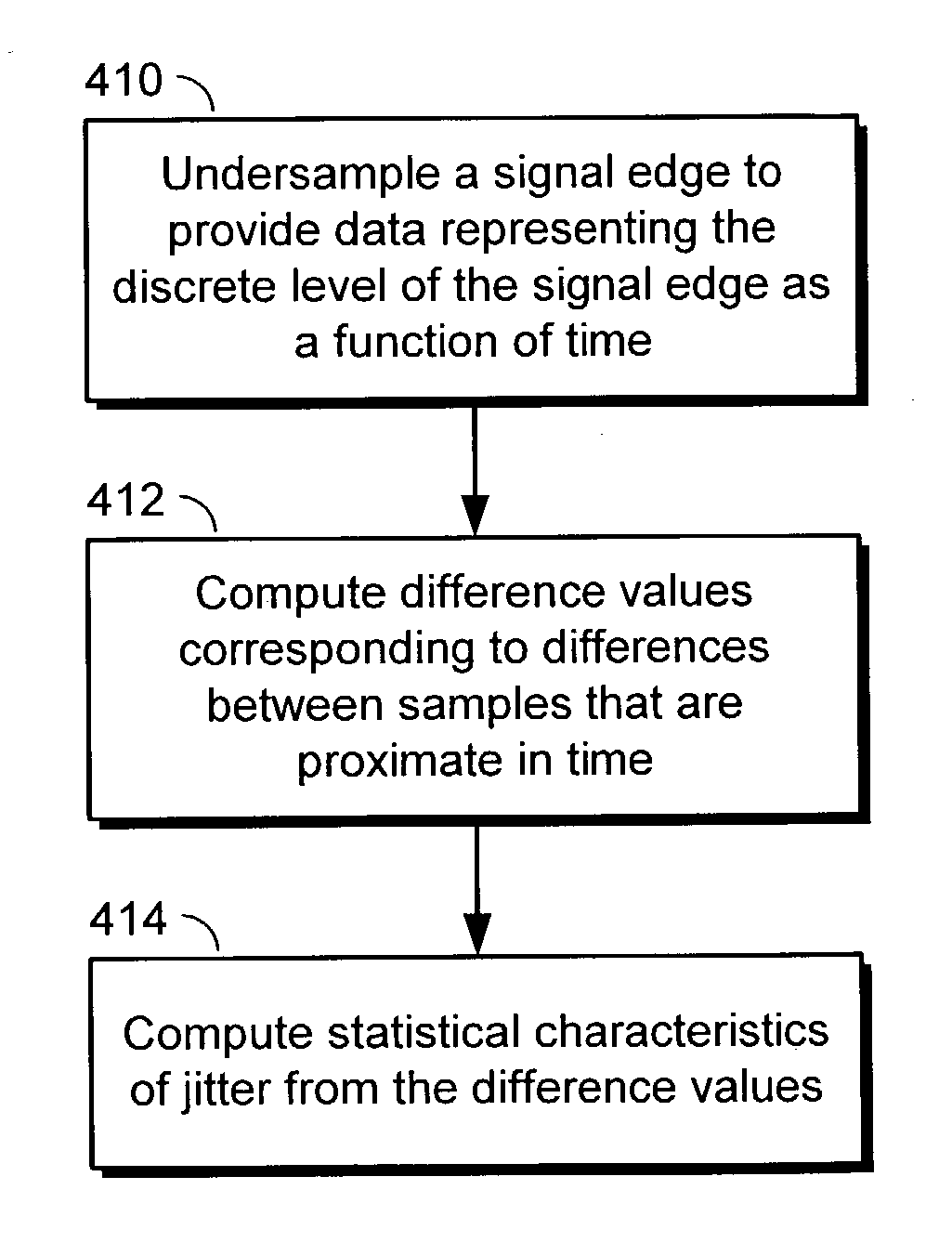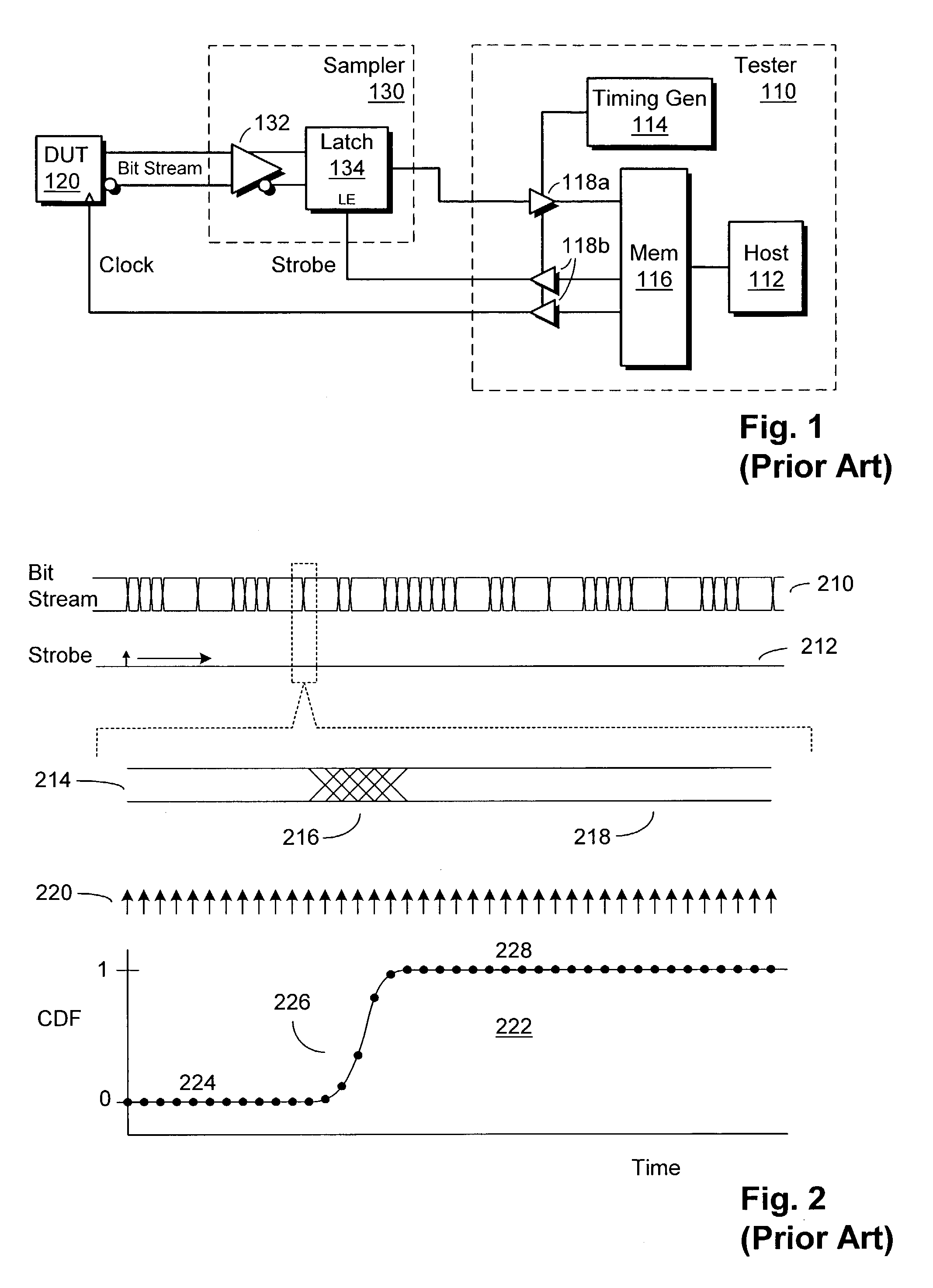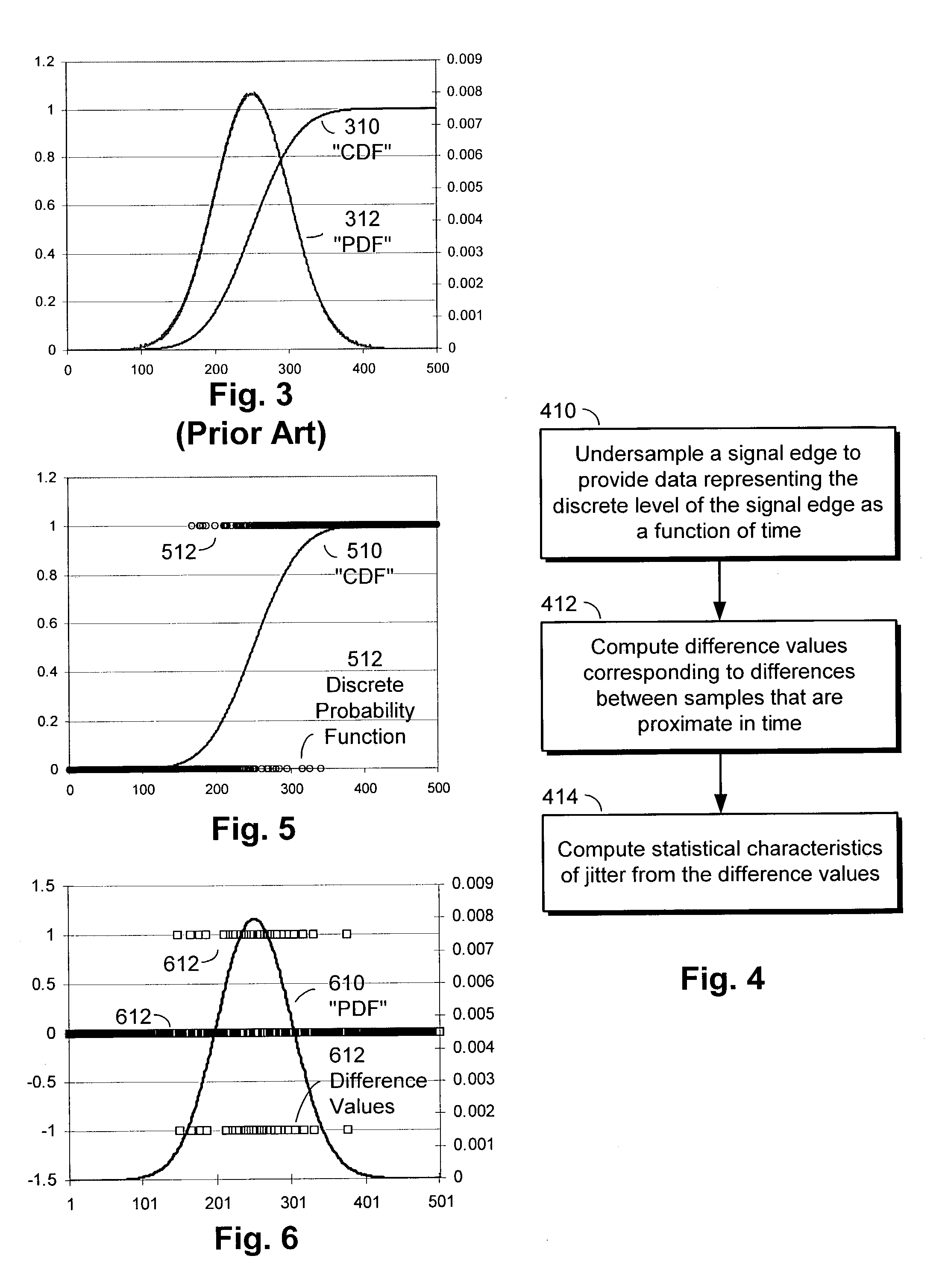Direct jitter analysis of binary sampled data
- Summary
- Abstract
- Description
- Claims
- Application Information
AI Technical Summary
Benefits of technology
Problems solved by technology
Method used
Image
Examples
Embodiment Construction
[0041]FIG. 4 shows a high level overview of an embodiment of the invention. At step 410, a signal edge is undersampled at regular intervals over a range of timing locations to determine whether the signal is a ‘1’ or a ‘0’ at each location.
[0042]At step 412, difference values are computed between samples that are proximate in time. The samples are ordered by timing location, and the difference values are preferably taken between each element and the previous element, i.e., a[i+1]−a[i], where “i” is an index that represents time between uniformly spaced samples. FIG. 7 shows the computation of difference values graphically—an array 712 of difference values is computed from differences between adjacent samples in an array 710, which is ordered by index 714.
[0043]At step 414, one or more statistical characteristics of the signal edge are computed directly from the difference values. These characteristics may include mean, variance, and standard deviation of the edge position (the speci...
PUM
 Login to view more
Login to view more Abstract
Description
Claims
Application Information
 Login to view more
Login to view more - R&D Engineer
- R&D Manager
- IP Professional
- Industry Leading Data Capabilities
- Powerful AI technology
- Patent DNA Extraction
Browse by: Latest US Patents, China's latest patents, Technical Efficacy Thesaurus, Application Domain, Technology Topic.
© 2024 PatSnap. All rights reserved.Legal|Privacy policy|Modern Slavery Act Transparency Statement|Sitemap



